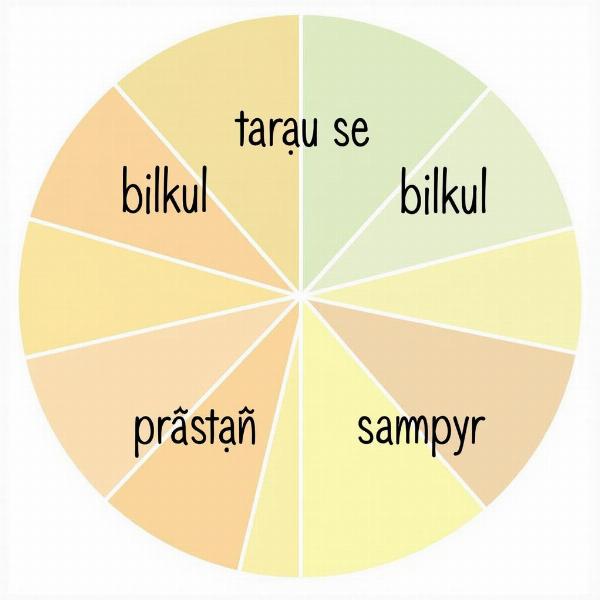Understanding the nuances of translation can be tricky, especially when dealing with a word as versatile as “completely.” This guide delves into the various ways to express “completely” in Hindi, covering different contexts and providing practical examples to ensure you grasp the subtle differences between each option. Whether you’re a language enthusiast, a student, or a professional needing precise translations, this article will equip you with the knowledge to use “completely” accurately in Hindi.
Exploring Hindi Equivalents of “Completely”
“Completely” in English signifies a state of totality or wholeness. In Hindi, several words and phrases capture this essence, each with its own specific connotations. Let’s explore some of the most common and effective translations:
-
पूरी तरह से (pūrī taraḥ se): This is perhaps the most direct translation of “completely.” It implies a thorough and absolute completion. For example, “The work is completely finished” translates to “काम पूरी तरह से खत्म हो गया है (kām pūrī taraḥ se khatm ho gayā hai).”
-
बिल्कुल (bilkul): This word often translates to “absolutely” or “totally.” It emphasizes the certainty and completeness of an action or state. For instance, “I completely agree with you” can be expressed as “मैं बिल्कुल आपसे सहमत हूँ (main bilkul āpse sahamat hūn).”
-
पूर्णतः (pūrṇataḥ): This is a more formal and literary term for “completely.” It’s often used in academic or official contexts. “The project is completely documented” could be translated as “परियोजना पूर्णतः प्रलेखित है (pariyojanā pūrṇataḥ pralekhit hai).”
-
पूरा (pūrā): This word simply means “full” or “complete.” While it can be used on its own, it often combines with other words to convey a sense of completeness. “The glass is completely full” can be said as “गिलास पूरा भरा हुआ है (gilās pūrā bharā huā hai).”
-
सम्पूर्ण (sampūrṇ): This term denotes “whole” or “entire.” It suggests a sense of completeness in all aspects. “The ceremony was completely traditional” translates to “समारोह सम्पूर्ण रूप से पारंपरिक था (samāroh sampūrṇ rūp se pāraṃparik thā).”
 Completely Meaning in Hindi: Visual representation of various Hindi words for 'completely'
Completely Meaning in Hindi: Visual representation of various Hindi words for 'completely'
Choosing the Right Word: Context is Key
The most appropriate Hindi translation for “completely” depends heavily on the context. Using bilkul to describe a completed task might sound unnatural, while pūrṇataḥ might feel too formal in casual conversation.
-
Formal Situations: Pūrṇataḥ and pūrī taraḥ se are ideal for formal writing, academic papers, or official communications.
-
Informal Conversations: Bilkul and pūrā are better suited for everyday conversations and informal settings.
-
Emphasis and Certainty: Bilkul is perfect when you want to emphasize the absolute nature of something.
Common Mistakes to Avoid
-
Direct Translation: While pūrī taraḥ se is a direct translation, it might not always be the most natural-sounding option.
-
Overusing Bilkul: While versatile, bilkul can sound repetitive if used excessively.
-
Ignoring Nuances: Each Hindi word for “completely” has its own subtle shade of meaning. Pay attention to these nuances to choose the most accurate term.
Completely Meaning in Hindi: Examples in Action
Here are some more examples to illustrate the usage of “completely” in Hindi:
-
He completely forgot about the meeting: वह मीटिंग के बारे में पूरी तरह से भूल गया (vah mīṭing ke bāre meṃ pūrī taraḥ se bhūl gayā).
-
The house was completely destroyed: घर पूरी तरह से नष्ट हो गया था (ghar pūrī taraḥ se naṣṭ ho gayā thā).
-
Are you completely sure?: क्या आपको पूरा यकीन है? (kyā āpko pūrā yakin hai?)
Conclusion
Mastering the different ways to express “completely” in Hindi enhances your communication skills and allows for more precise and nuanced expression. By understanding the context and choosing the appropriate word, you can confidently navigate various situations and convey your message effectively. Remember to consider the level of formality, the desired emphasis, and the subtle differences in meaning between each option. Now, you’re completely equipped to use “completely” in Hindi like a pro!
FAQ
-
What is the most common way to say “completely” in Hindi? Pūrī taraḥ se is generally the most common and direct translation.
-
Can I use bilkul in formal situations? While bilkul is versatile, it’s generally better suited for informal contexts.
-
What is the difference between pūrā and sampūrṇ? Pūrā implies fullness, while sampūrṇ suggests wholeness or entirety.
-
How can I choose the right word for “completely” in Hindi? Consider the context, formality, and desired emphasis.
-
Is there a formal equivalent of “completely” in Hindi? Pūrṇataḥ is a formal and literary term for “completely.”
Meaning-Hindi.in is your one-stop solution for all your Hindi translation needs. We offer a comprehensive range of services, from business and legal document translation to website localization and technical manual translation. Our team of expert linguists ensures accurate and culturally sensitive translations. Contact us today for a free quote! Email: [email protected], Phone: +91 11-4502-7584. Let Meaning-Hindi.in help you bridge the language gap!